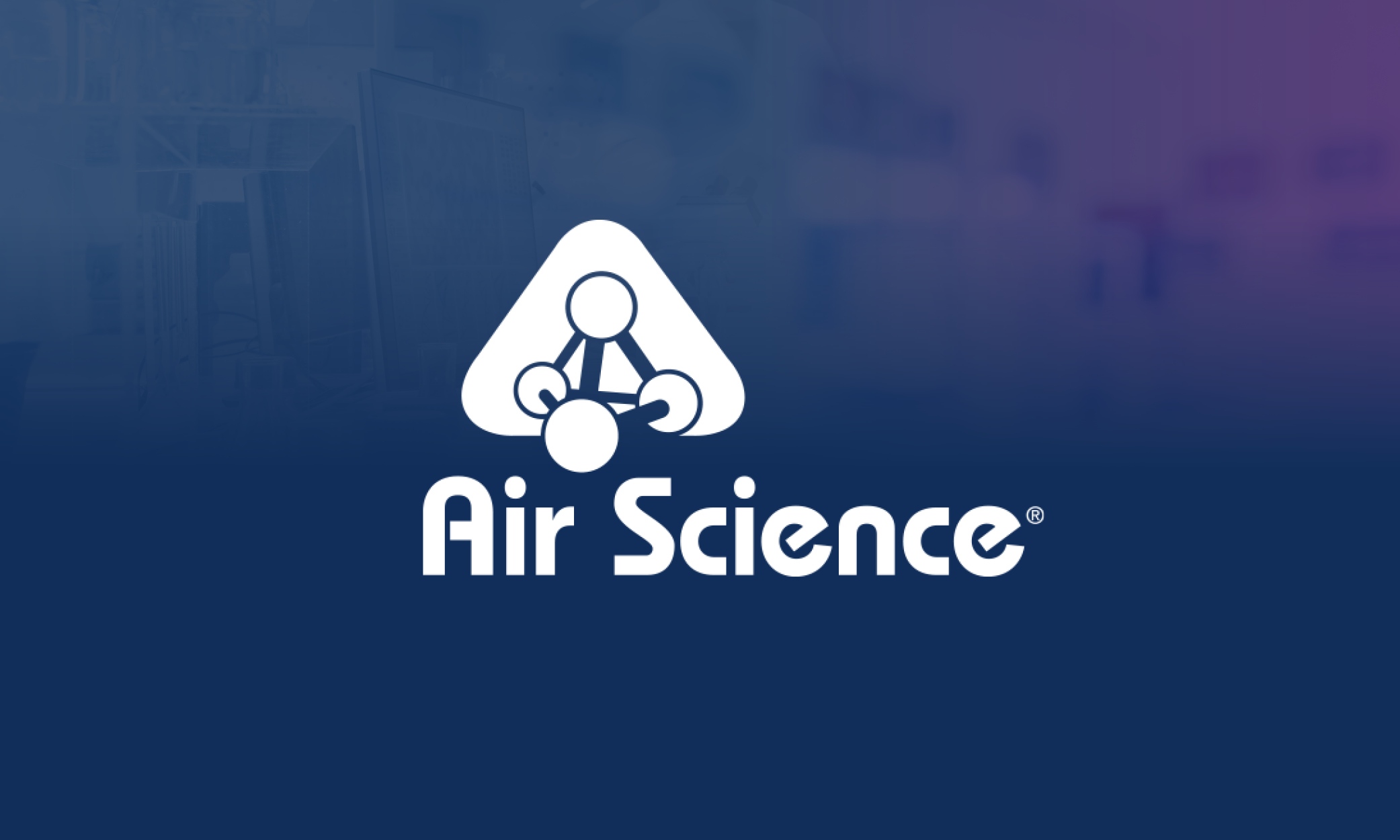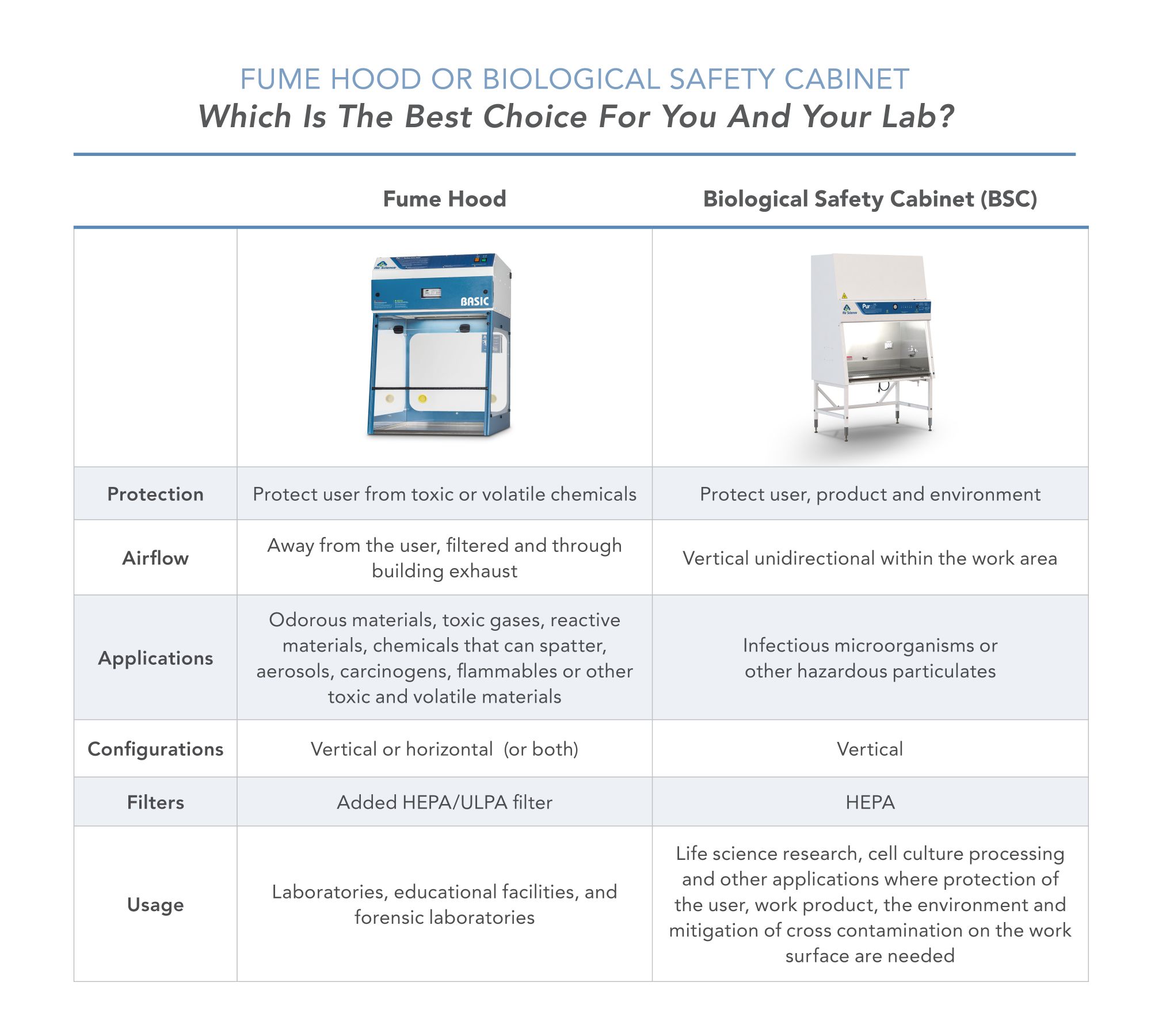
While a biological safety cabinet (biosafety cabinet or BSC) is sometimes referred to as a ductless fume hood, the BSC does not protect from chemical vapors. Likewise, ductless fume hoods are not biological safety cabinets, but can protect from particulates when fitted with HEPA/ULPA filters.

When it comes to selecting the right “ductless fume hood” for your laboratory, here are some important points to consider:
Protection
Knowing what type of protection you will require, is the first step in selecting the proper laboratory enclosure. Fume hoods are designed to provide user protection from toxic or volatile chemicals by continuously delivering airflow away from the operator to the work area. Biological safety cabinets are designed to provide user, product and environmental protection. In fact, there are several options of class and varying levels of protection available in BSC’s.
- Class I biosafety cabinets are designed solely for operator protection.
- Class II and Class III protect the product or specimen, the user and the environment from contamination.
- Class II cabinets have open access to the work zone while Class III BSC’s, often referred to as glove boxes, provides a barrier between the user and the work area.
- A class III biosafety cabinet is crucial for working with any biosafety level 4 agents, or other dangerous materials, such as aerosols of pathogens or toxins.
Where biological safety is required, the Purair BIO offers a Class II, Type A2 NSF certification for personnel, work surface and environmental protection from airborne particulates and biologicals. This cabinet maintains a negative pressure inside the cabinet during operation to prevent contaminants from escaping the work area. The Purair BIO is ideal for life science researchers, various biological protocols, and for sterile product preparation in a number of industries.
Airflow
Fume hood airflow
Fume hoods are designed to continuously deliver airflow away from the user to the work area. Air is then filtered and/or treated by the building’s exhaust system before exiting the facility (ducted) or by filters contained in the fume hoods, which clean the contaminated air and recirculate it directly back into the laboratory (ductless).
Biosafety cabinet airflow
Biosafety cabinets use HEPA-filtered, vertical unidirectional airflow within the work area to protect personnel from exposure to airborne biohazards and other potentially harmful particulates within the cabinet. Product protection is achieved when this vertical unidirectional downflow air combines with suction below the intake grille and prevents outside airborne contaminants from entering the workspace. The environment is protected because air is HEPA filtered before being exhausted.
Applications
Fume hoods: Chemical fume hoods can be used to handle the following: odorous materials, toxic gases, reactive materials, chemicals that can spatter, aerosols, carcinogens, flammables or other toxic and volatile materials.
Biosafety cabinets: Biosafety cabinets provide a safe environment for research involving infectious microorganisms or other hazardous particulates. Depending on the type of cabinet, these enclosures are suitable for use with agents requiring containment in conjunction with Biosafety Level (BSL) 1, 2 or 3. (Note that Class III cabinets can accommodate BSL 4 agents. Class II cabinets can accommodate BSL 4 applications with proper personnel protective equipment.)
Fume hoods are designed to protect the user:
- Available in vertical or horizontal (or both) airflow configurations.
- Protects the user from fume and (with added HEPA/ULPA filter) particle hazards.
- Used in research laboratories, educational facilities and forensic laboratories
- For more information visit /ductless-fume-hoods
Biological safety cabinets offer added layers of protection for both the product/process on the work surface, the user and the environment.
- Available in vertical airflow configuration only.
- The cabinet must comply with NSF 49 Class II, Type A2 performance criteria for inflow, downflow, exhaust and cross contamination protection.
- Used in life science research, cell culture processing and other applications where protection of the user, work product, the environment and mitigation of cross contamination on the work surface are needed.
- For more information visit airscience.com/biological-safety-cabinets
For assistance in choosing the right product for your application, talk with a technical sales specialist at Air Science or request a quote.